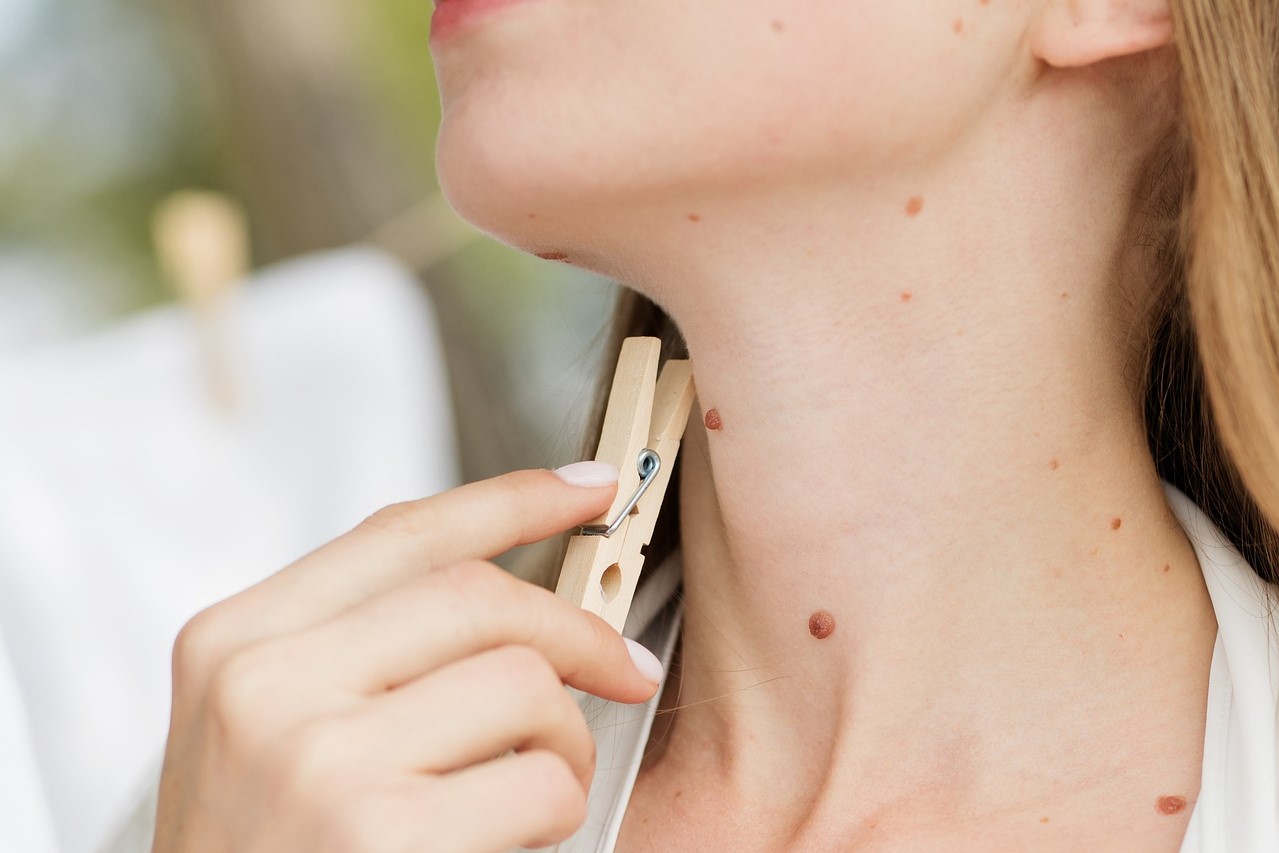Acrochordons/ Skin tag meaning a small piece of soft, hanging skin that may have a peduncle or stalk that usually hangs out. Skin tags are seen equally in males and females with the most patients present in the middle age group. They can appear anywhere on the body but are commonly seen where folds of the skin.
They may appear on the:
- Eyelids and around
- Armpits or axilla
- Under the breasts
- Groin folds
- Upper chest
- Neck

Risk factors for the development of skin tags
Skin tags appear to be more common in people who are:
- Overweight and obese individuals
- Those with diabetes
- Women during pregnancy, possibly due to hormonal changes and high levels of growth factors
- Females with hormonal imbalance like PCOS
- Those whose close family members also have skin tags
- Dyslipidemia, for example, high cholesterol levels
Skin tag treatment
As skin tags are usually harmless, removal is normally advocated for cosmetic or aesthetic reasons.
Large skin tags, especially in areas where they may rub against something, such as clothing, jewelry, or skin, may be removed due to irritation or recurrent infection.
Procedures
The following procedures may be used:
- Excision: The tag is cut out with a radiofrequency device or scalpel
- Cauterization: The skin tag is burned off using electrolysis
- Cryosurgery: The skin tag is frozen off using a probe containing liquid nitrogen
After it’s removed, it usually won’t recur. But new skin tags can appear somewhere else on your body.
These procedures should only be done by a dermatologist- a specialist skin doctor. Dermatologists have the in-depth medical expertise required to remove skin tags with the least amount of injury. If you decide you want yours removed, or notice changes in it, make an appointment to see a Dermatologist
What does the skin tag removal cost?
It varies according to the procedure to be followed, needs for anesthesia, site of skin tags & their numbers.
Can I Remove It Myself?
Removing a skin tag at home is not normally recommended, due to a risk of profuse bleeding, secondary infection, scarring, and possible residual dark pigmentation


